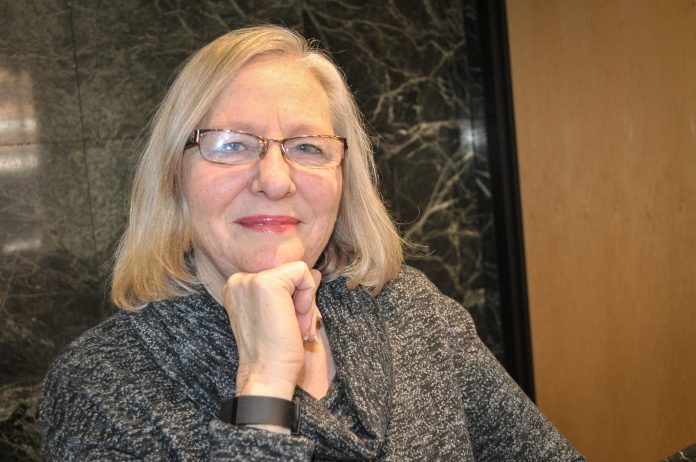by Bobby Anderson,
Staff Writer
At 66, Sheryl Delancy RN, BSN is on the cutting edge of drug research in her role at Oklahoma Medical Research.
“It’s interesting because I’ve seen drugs that we’ve studied that are now on the market,” Delancy said. “That’s kind of fun. And I’ve seen other drugs that have changed indications and are helpful for more patients or a different kind of patient. And some have failed.”
OMRF is at the epicenter of research for a number of medications as well as disease procesess.
Basic research like that conducted in OMRF laboratories focuses on the mechanisms and triggers that lead to human diseases and disorders. By observing the normal biological processeses at the molecular level, scientists can ask important questions that yield better understanding of disease formation. How do normal cells become abnormal and lead to cancer? Why does the immune system sometimes attack the body’s own tissues? What happens in the brain to cause Parkinson’s or Alzheimer’s disease?
These and countless questions like them form the foundation of the research studies underway at OMRF. And the search for answers, more often than not, leads to yet more questions—questions that OMRF researchers strive to answer in hopes that more will live longer, healthier lives.
Delancy works in clinical pharmacology, one of the two areas in OMRF that actually sees patients on a regular basis. She coordinates incoming study patients involving lupus and rheumatoid arthritis.
In these studies participants are given medications at regular intervals.
Some studies involve drugs that are not on the market and are being evaluated for safety and efficacy. Other studies involve drugs already on the market but being looked at for a different indication.
“When they have been identified as somebody who might be interested in that study I do consent and screening to make sure they fit that study,” Delancy says.
It’s a truly rewarding profession.
Delancy graduated nursing school in 1975 from the University of Central Oklahoma.
When she graduated she went to work in cardiac care at Baptist Hospital. From there she spent a few years at a blood bank and then on to the Oklahoma Allergy and Asthma Clinic where she logged 32 years.
She saw an ad in the paper for the Oklahoma Medical Research Foundation and just celebrated her eighth year in January.
She worked some in research at the Allergy Clinic
“I knew I wanted to stay in a clinic setting. I did not want to go back into the hospital,” Delancy said. “It seemed interesting.”
So she jumped at the chance to join OMRF and hasn’t looked back.
She enjoys her role, even compared against bedside nursing.
“It’s a lot better hours,” she laughed. “The clinic setting has always worked well for my family. Although I liked working in CCU, and I learned a lot there, I was working nights and had a young child and just couldn’t do it anymore.”
Delancy has three children grown and out of the house and is knee-deep in the grandchild phase.
Coming to work every day is a blessing.
“I really like the patient interaction you get. You get to know them,” she says. “You see them maybe every week, every month or every three months but there’s that connection. And although they have a serious illness they’re basically healthy.”
When Delancy came to OMRF she admitted there was a learning curve.
“When I came here I had to learn how to start IVs again. I had to learn how to draw blood again,” Delancy said. “It was a push. It was (humbling in the beginning). I was the oldest nurse. All the others were my childrens’ age. It was fun though. I really enjoyed the youth and they taught me a lot, too.”
Now this nurse has a thing or two to teach patients about lupus and rheumatoid arthritis.












